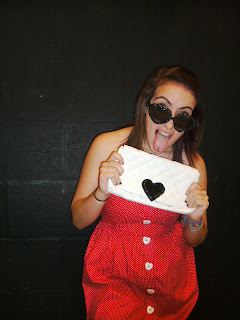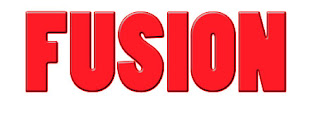When we first started out preliminary task, I didn't have much knowledge of Photoshop and didn't know how to make things look professional and add effects such as shadowing. However, throughout the process of making my magazine, I feel I have learnt a great deal of skills on both Photoshop and Indesign.
One factor I have definintely improved on is my cutting around images on Paintshop, using the pen tool:
One factor I have definintely improved on is my cutting around images on Paintshop, using the pen tool:
This was the first image I cut for preliminary task. The cutting is unaccurate and there is still traces of the background. I also didn't take as much care and time on cutting around this image.
This is my front cover image. I have cut this much more accurately and made sure there is none of the background of the photo showing. I also used the rubber tool to smooth out any sharp edges to make it look more accurate and proffesional.
Another skill I have learnt is how to experiment with editing photos, for example, I changed the photos below using the contract/brightness tool and ended up with different coloured images:
I also discovered effects such as 'shadowing' and 'outer glow' which I used a lot on my headings and on my masthead. I didn't know about this technique when I made my masthead for my preliminary task so therefore, my masthead didn't stand out as much and didn't look as appealing as my masthead on my final magazine:
Although on my first masthead, I used an effect, it wasn't as effective as my final masthead which is simple, but bright and bold and appeals to my target audience.
(You can't see shadowing on my final masthead because it doesn't show on this blog).
My use of both Photoshop and Indesign have improved a lot since the start of this process. I have learnt how to edit and maniupulate photos, for example, changing colour photos into sepia, greyscale, etc, or simply changing the contrast. On my preliminary task, I kept the photos as they were, and some were not of a good quality, but on my Final Magazine, I learnt how to edit the photos so they looked much more professional and so they matched with the colour scheme of my magazine. For example, I used photoshop to change all of my images on my contents page to greyscale, as they fitted in with my colour scheme more sucessfully than when they were in colour. Compared to my preliminary task, my final magazine is much more matched and the colours go together, whereas my first magazine l0oks messy due to the overuse of bright, vibrant colours. I have now leant to contrast bright colours with darker colours such as black and white - this still looks eye-catching, but keeping is simple sometimes looks more professional which was one of my aims of my magazine.
For example, this is one of the photos I took for my preliminary task. The background appears to be messy and little thought has gone into the costume or props and whether they would be relevant to the genre of magazine.
My use of both Photoshop and Indesign have improved a lot since the start of this process. I have learnt how to edit and maniupulate photos, for example, changing colour photos into sepia, greyscale, etc, or simply changing the contrast. On my preliminary task, I kept the photos as they were, and some were not of a good quality, but on my Final Magazine, I learnt how to edit the photos so they looked much more professional and so they matched with the colour scheme of my magazine. For example, I used photoshop to change all of my images on my contents page to greyscale, as they fitted in with my colour scheme more sucessfully than when they were in colour. Compared to my preliminary task, my final magazine is much more matched and the colours go together, whereas my first magazine l0oks messy due to the overuse of bright, vibrant colours. I have now leant to contrast bright colours with darker colours such as black and white - this still looks eye-catching, but keeping is simple sometimes looks more professional which was one of my aims of my magazine.
Another skill I have learnt over this process is my photography skills. My preliminary task contains messy, unedited photos, however, I prepared the photos for my final magazine more successfully, ensuring that the outfits and props used in the photos related to the genre and theme of my magazine. Although we edited the backgroun of our photos in Photoshop, I also ensured that I took my photos against a plain backdrop:
However, I took a lot of time to concider the genre and theme of my magazine here and chose costume and props which I thought would be suitable for my target audience and the genres that appealed to them. I also made sure that the photo was of a decent quality, for example, no objects in the background, no flashes on the photo, etc.

























